Pathophysiology of sleep apnea
- PMID: 20086074
- PMCID: PMC3970937
- DOI: 10.1152/physrev.00043.2008
Pathophysiology of sleep apnea
Erratum in
- Physiol Rev.2010 Apr;90(2):797-8
Abstract
Sleep-induced apnea and disordered breathing refers to intermittent, cyclical cessations or reductions of airflow, with or without obstructions of the upper airway (OSA). In the presence of an anatomically compromised, collapsible airway, the sleep-induced loss of compensatory tonic input to the upper airway dilator muscle motor neurons leads to collapse of the pharyngeal airway. In turn, the ability of the sleeping subject to compensate for this airway obstruction will determine the degree of cycling of these events. Several of the classic neurotransmitters and a growing list of neuromodulators have now been identified that contribute to neurochemical regulation of pharyngeal motor neuron activity and airway patency. Limited progress has been made in developing pharmacotherapies with acceptable specificity for the treatment of sleep-induced airway obstruction. We review three types of major long-term sequelae to severe OSA that have been assessed in humans through use of continuous positive airway pressure (CPAP) treatment and in animal models via long-term intermittent hypoxemia (IH): 1) cardiovascular. The evidence is strongest to support daytime systemic hypertension as a consequence of severe OSA, with less conclusive effects on pulmonary hypertension, stroke, coronary artery disease, and cardiac arrhythmias. The underlying mechanisms mediating hypertension include enhanced chemoreceptor sensitivity causing excessive daytime sympathetic vasoconstrictor activity, combined with overproduction of superoxide ion and inflammatory effects on resistance vessels. 2) Insulin sensitivity and homeostasis of glucose regulation are negatively impacted by both intermittent hypoxemia and sleep disruption, but whether these influences of OSA are sufficient, independent of obesity, to contribute significantly to the "metabolic syndrome" remains unsettled. 3) Neurocognitive effects include daytime sleepiness and impaired memory and concentration. These effects reflect hypoxic-induced "neural injury." We discuss future research into understanding the pathophysiology of sleep apnea as a basis for uncovering newer forms of treatment of both the ventilatory disorder and its multiple sequelae.
Figures






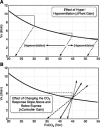





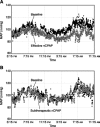

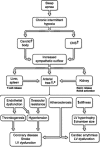
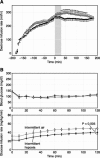

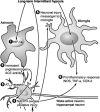

References
-
- Aalkjaer C, Poston L. Effects of pH on vascular tension: which are the important mechanisms? J Vasc Res 33: 347–359, 1996 - PubMed
-
- Abinader EG, Peled N, Sharif D, Lavie P. ST-segment depression during obstructive sleep apnea. Am J Cardiol 73: 727, 1994 - PubMed
-
- Adams MR, Kinlay S, Blake GJ, Orford JL, Ganz P, Selwyn AP. Atherogenic lipids and endothelial dysfunction: mechanisms in the genesis of ischemic syndromes. Annu Rev Med 51: 149–167, 2000 - PubMed
-
- Al Delaimy WK, Manson JE, Willett WC, Stampfer MJ, Hu FB. Snoring as a risk factor for type II diabetes mellitus: a prospective study. Am J Epidemiol 155: 387–393, 2002 - PubMed
-
- Al-Zubaidy ZA, Erickson RL, Greer JJ. Serotonergic and noradrenergic effects on respiratory neural discharge in the medullary slice preparation of neonatal rats. Pflügers Arch 431: 942–949, 1996 - PubMed
Publication types
MeSH terms
Grants and funding
LinkOut - more resources
Full Text Sources
Other Literature Sources
Medical

